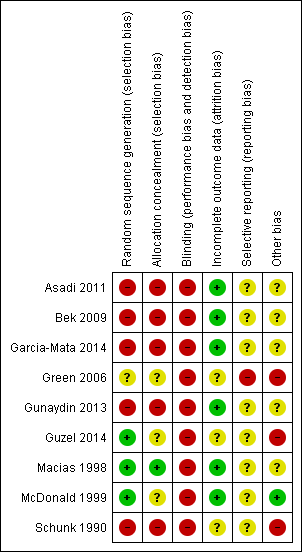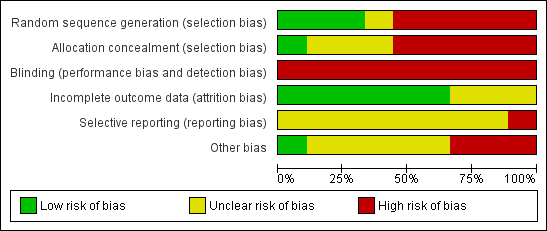Contenido relacionado
Revisiones y protocolos relacionados
Helen HG Handoll, Joanne Elliott, Zipporah Iheozor‐Ejiofor, James Hunter, Alexia Karantana | 19 diciembre 2018
Joelle Chalmer, Megan Blakeway, Zoe Adams, Stephen J Milan | 28 febrero 2013
Fraser Taylor, Martyn Sims, Jean‐Claude Theis, G Peter Herbison | 18 abril 2012
Marcel JS Tamaoki, Mário Lenza, Fabio T Matsunaga, João Carlos Belloti, Marcelo H Matsumoto, Flávio Faloppa | 11 octubre 2019
Gino MMJ Kerkhoffs, Brian H Rowe, Willem JJ Assendelft, Karen D Kelly, Peter AA Struijs, C N van Dijk | 28 marzo 2013
Jasper S de Vries, Rover Krips, Inger N Sierevelt, Leendert Blankevoort, C N van Dijk | 10 agosto 2011
Tae‐Hun Kim, Myeong Soo Lee, Kun Hyung Kim, Jung Won Kang, Tae‐Young Choi, Edzard Ernst | 23 junio 2014
Michael H Bennett, Thomas M Best, Shelina Babul‐Wellar, Jack E Taunton | 19 octubre 2005
Mário Lenza, Flávio Faloppa | 15 diciembre 2016
Gino MMJ Kerkhoffs, Helen HG Handoll, Rob de Bie, Brian H Rowe, Peter AA Struijs | 18 abril 2007
Respuestas clínicas Cochrane
David S. Edwards | 15 enero 2018








